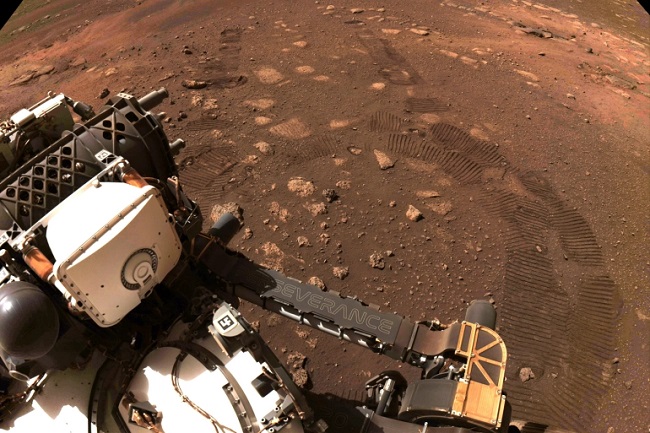Washington DC, Gatra.com- NASA’s Mars Perseverance rover has detected the highest concentration of organic molecules, in a potential ancient microbial signal that scientists want to confirm when the rock samples are finally brought to Earth. Thereby AFP15/9.
Although organic matter has previously been found on the Red Planet, this new discovery looks very promising because it comes from an area where sediments and salt have been deposited in lakes, conditions in which life could emerge.
“It is fair to say that this is the most valuable rock sample ever collected,” David Shuster, a scientist on the returning champion from Perseverance, told reporters.
Organic molecules – compounds consisting mainly of carbon that usually contain hydrogen and oxygen, but sometimes other elements as well – are not always created by biological processes.
Further analysis and conclusions will have to await the Mars Sample Return mission, a collaboration between NASA and the European Space Agency (ESA) to bring back the rocks set in 2033.
Dubbed Percy, the rover landed in Mars’s Jezero Crater in February 2021, tasked with preserving samples that may contain signs of ancient life, as well as characterizing the planet’s geology and past climate.
The delta explored was formed 3.5 billion years ago. Rover is currently studying sedimentary rock, which arises from particles of various sizes that are deposited in the then aqueous environment.
Percy took two samples of a rock called “Wildcat Ridge”, which is about three feet (one meter) wide, and on July 20 he scraped off part of its surface so that it could be analyzed with an instrument called SHERLOC which uses the ultraviolet light.
The results show a class of organic molecules called aromatics, which play a key role in biochemistry.
“This is a treasure hunt for signs of life on other planets,” said NASA astrobiologist Sunanda Sharma.
“Organic matter is a clue and we are getting stronger and stronger contacts … Personally I find these results very moving because it seems that we are in the right place, with the right tools, in a very important moment”.
There are other tantalizing clues to the possibility of life on Mars earlier, including the repeated detection of methane by Perseverance’s predecessor, Curiosity.
Although methane is a byproduct of microbial digestion on Earth, it can also be produced by geothermal reactions in which no biology plays a role.
–


